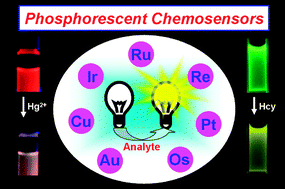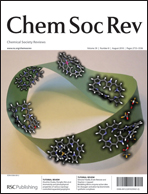Phosphorescent chemosensors based on heavy-metal complexes
Abstract
Recently, the use of phosphorescent heavy-metal complexes as chemosensors has attracted increasing interest due to their advantageous photophysical properties. This critical review focuses on the design principles and the recent development of phosphorescent chemosensors for metal cations, anions, pH,


 Please wait while we load your content...
Please wait while we load your content...